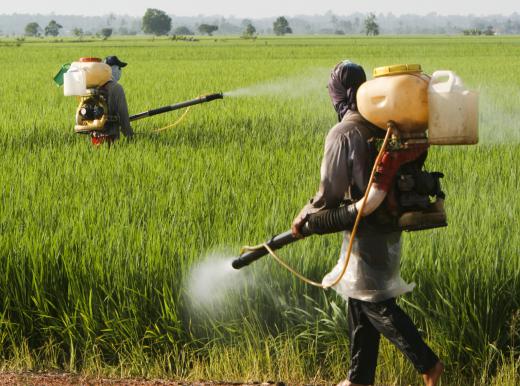What is Biological Magnification?
Biological magnification, also known as biomagnification or bioamplification, explains why a substance appears in higher concentrations in organisms higher in a given food chain than in organisms lower in a food chain. This happens because creatures high up in the food chain, such as predators, feed on creatures that are lower in the food chain and absorb the substances from the organisms they consume in addition to the substances they directly absorb from the environment. In some cases, the process of biological magnification can be harmful to the organisms that are high in a food chain because they absorb harmful substances from all of the organisms they consume. While the tiny amounts absorbed from the environment could be completely harmless, the amounts consumed from food sources could add up and be harmful.
Several things must be true of a substance for biological magnification to occur. The substance must be able to be absorbed at some point in the food chain, or else it would not be able to be magnified. It must not be broken down easily by the environment, as this would remove it from the food chain. It must be difficult for organisms to break down or safely digest it, as digestion would also prevent it from being absorbed by organisms higher in the food chain.

While biological magnification can technically happen with any substance that meets these criteria, it is usually studied because of the magnification of harmful substances such as fertilizers, pesticides, and heavy metals. Often, such substances accumulate in an organism's fat cells, as they can not break dissolve in water and exit the body through the urine. When an organism higher in the food chain consumes a creature lower in the food chain, it absorbs fats in its gut. With these fats come the substances previously taken in by the other organism and all of the harmful effects these substances may carry with them. Many plants, aquatic and terrestrial, are prone to absorbing a variety of substances because they often lack the means to effectively digest them.

One of the primary substances that scientists study in relation to biological magnification is the pesticide dichlorodiphenyltrichloroethane, better known as DDT. DDT has had a long and controversial history; it is a very effective pesticide but some studies have shown that it can have a detrimental effect on the environment and on human and animal health. It is also difficult for many organisms to effectively break it down, so it is often magnified through food pyramids.
AS FEATURED ON:
AS FEATURED ON:













Discussion Comments
@hyrax53, the combination of what the article discusses, with things like DDT, and what you mention, with energy loss, are a large part of the reason I avoid eating meat and really anything that is farmed by big agriculture. While DDT might be less common now, the same thing applies for things like antibiotics that are given to animals now.
Some substances might magnify in this way, but it is important to know that actual usable energy has the opposite pattern. Organisms at the bottom of the food chain have far more energy, and every step up divides that energy by 10.
Imagine a grassy meadow with 100% usable energy. When a cow eats that grass, the cow only ends up with 10% of that usable energy. This is part of the reason that raising livestock for meat is one of the most wasteful uses of land in agriculture.
Post your comments